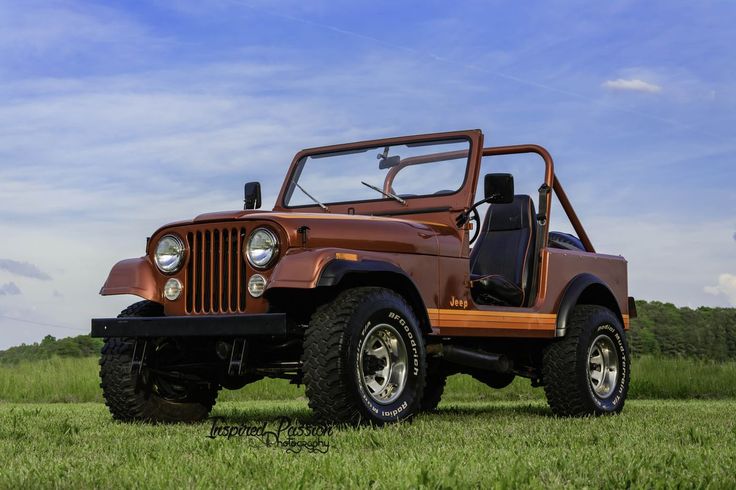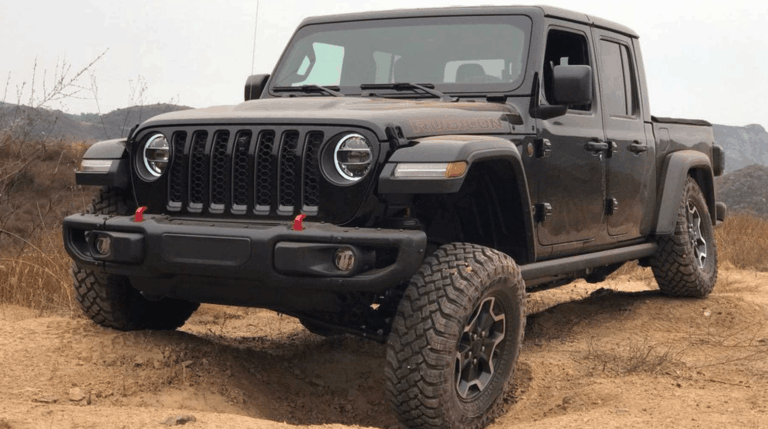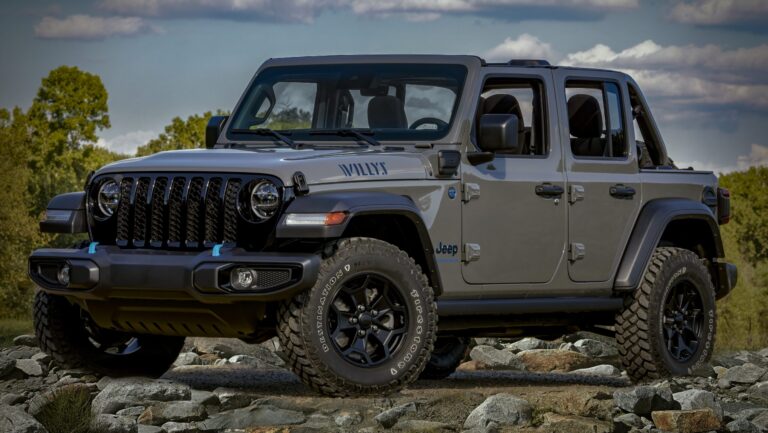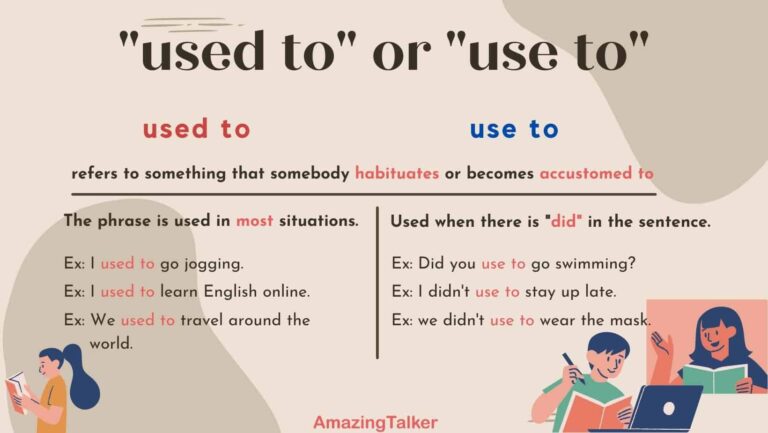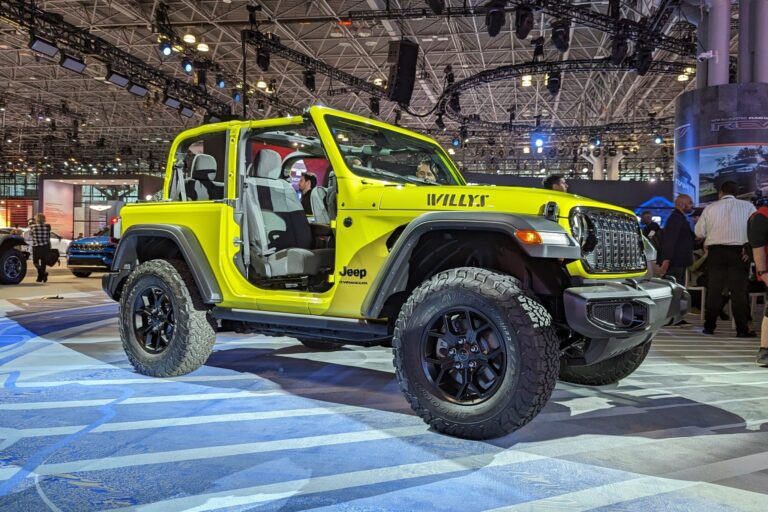The Enduring Allure: Understanding the 76 CJ7 Jeep For Sale
The Enduring Allure: Understanding the 76 CJ7 Jeep For Sale jeeps.truckstrend.com
The mention of a "76 CJ7 Jeep for sale" evokes a strong sense of nostalgia, rugged adventure, and American automotive history. For many, the Jeep CJ7, particularly the inaugural 1976 model year, represents the quintessential classic off-roader – a vehicle synonymous with freedom, exploration, and an unbreakable spirit. It’s more than just a car; it’s an icon, a canvas for customization, and a gateway to a vibrant community of enthusiasts. This comprehensive guide aims to peel back the layers of what makes the 1976 CJ7 so special, offering insights for prospective buyers, enthusiasts, and anyone captivated by this timeless machine.
The 1976 CJ7 holds a unique place in Jeep’s lineage. It was the first year of production for the CJ7, introduced to offer a longer wheelbase than its predecessor, the CJ5, thereby improving ride quality and stability, particularly at highway speeds. This subtle but significant change made the CJ7 more versatile and appealing to a broader audience while retaining the classic open-top, go-anywhere capability that defined the CJ series. Today, a 1976 CJ7 for sale isn’t just a transaction; it’s an opportunity to own a piece of automotive heritage, whether for trail adventures, weekend cruises, or a dedicated restoration project.
The Enduring Allure: Understanding the 76 CJ7 Jeep For Sale
Why the 1976 CJ7 Stands Out: A Legacy of Ruggedness
The allure of the 1976 CJ7 lies in its blend of classic aesthetics and robust mechanicals. As the first of its kind, it carried over many reliable components from the CJ5 while introducing a more refined package.
- Classic Design: The flat fenders, removable doors, fold-down windshield, and exposed hinges are instantly recognizable and embody the classic Jeep aesthetic. The longer wheelbase (93.5 inches) compared to the CJ5 (83.5 inches or 92 inches) provided a more balanced stance.
- Engine Options: The ’76 CJ7 offered a range of AMC engines, primarily the bulletproof 258 cubic inch (4.2L) inline-six, renowned for its torque and durability, making it ideal for off-roading. A 304 cubic inch (5.0L) V8 was also available, offering more power for those seeking higher performance. These engines, while not fuel-efficient by modern standards, are relatively simple to maintain and highly reliable.
- Drivetrain Durability: Equipped with solid axles (Dana 30 front, AMC 20 rear) and robust transfer cases (initially the Dana 20, later replaced by the Dana 300 in the early 80s, though some late ’76 models might have seen the switch), the CJ7 was built to withstand the rigors of off-road use. Manual transmissions like the T-150 (3-speed) or T-18 (4-speed) were common, providing sturdy power delivery.
- Modifiability: The CJ7 platform is legendary for its aftermarket support. From lift kits and larger tires to engine swaps and custom interiors, owners can transform a stock CJ7 into a highly capable off-road monster, a comfortable cruiser, or a show-stopping custom build. This adaptability ensures a vibrant market for parts and expertise.
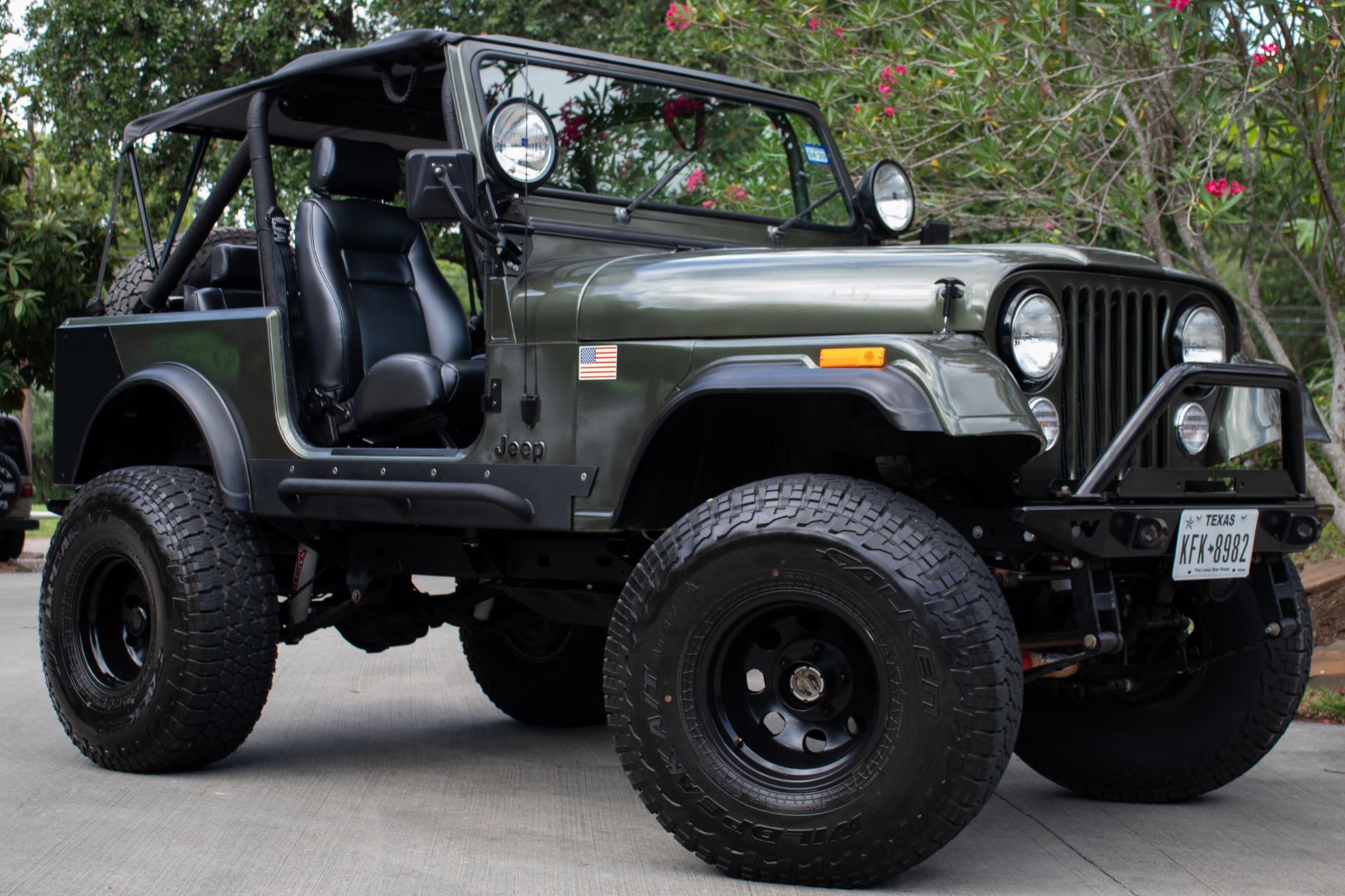
Key Considerations When Searching for a 76 CJ7 Jeep For Sale
Acquiring a vintage vehicle like the 1976 CJ7 requires a discerning eye and a clear understanding of potential pitfalls and opportunities. Here’s what to prioritize:
-
Rust, Rust, Rust: This is the single most critical factor when evaluating any vintage Jeep, and the ’76 CJ7 is no exception. Pay meticulous attention to:

- Frame: Check the frame rails, especially around the spring hangers, steering box, and body mounts, for rot, cracks, or questionable repairs.
- Body Tub: Examine the floorboards (especially under the pedals and seats), rocker panels, wheel wells, and the rear corners. Rust here is common due to water pooling.
- Fenders and Windshield Frame: These areas are also prone to corrosion.
- Solution: While minor surface rust can be addressed, extensive frame or tub rust often necessitates costly repairs or replacement, significantly impacting the vehicle’s value and your budget. Aftermarket replacement tubs (steel or fiberglass) are available but add to the cost.
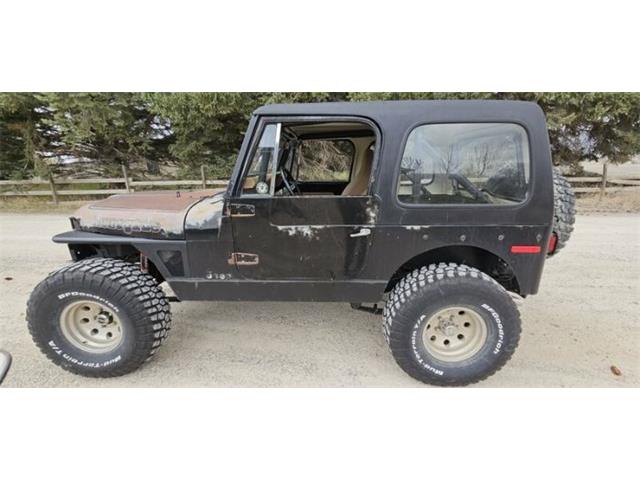
-
Engine and Drivetrain Health:
- Engine: Listen for knocking, excessive smoke (blue for oil, white for coolant, black for rich fuel mixture), and unusual noises. Check for fluid leaks. A compression test can reveal engine health.
- Transmission/Transfer Case: Ensure smooth shifting (manuals) or proper engagement (automatics). Check for grinding, whining, or difficulty staying in gear. Test 4WD engagement (high and low range).
- Axles: Look for leaks at the differential covers and axle seals. Check for excessive play in the universal joints (U-joints) and wheel bearings.
- Solution: Budget for potential rebuilds or replacements if significant issues are found. Parts are generally available, but labor can be expensive.
-
Steering and Suspension:
- Steering Play: Excessive play in the steering wheel indicates worn components like the steering box, tie rods, drag link, or ball joints.
- Suspension: Inspect leaf springs for sagging or broken leaves. Check shock absorbers for leaks. Worn bushings can lead to a noisy and unstable ride.
- Solution: Many CJ7s have aftermarket lift kits. Ensure these modifications were installed correctly and professionally. Poorly installed lifts can compromise safety and handling.
-
Electrical System:
- Check all lights, gauges, wipers, and the heater/blower motor. Look for frayed wires, aftermarket wiring "hacks," or evidence of previous electrical fires.
- Solution: An old electrical system can be a headache. Consider the cost of a new wiring harness if the existing one is compromised.
-
Modifications and Documentation:
- Modifications: Understand what modifications have been made and why. Are they professional and safe? Do they align with your intended use for the Jeep? Poorly executed modifications can be a red flag.
- Documentation: Always ask for the title and any available service records. A clear title is essential. Records can provide insight into the vehicle’s history and maintenance.
Practical Advice for Buyers
- Define Your Purpose: Are you seeking a show-quality restoration, a capable trail rig, or a fun weekend cruiser? Your goal will dictate the condition of CJ7 you should target and your budget.
- Set a Realistic Budget: Beyond the purchase price, factor in immediate repairs, deferred maintenance, registration, insurance, and potential upgrades.
- Get a Pre-Purchase Inspection (PPI): If you’re not an expert, hire a reputable mechanic (preferably one familiar with vintage Jeeps) to perform a thorough inspection. This small investment can save you thousands down the road.
- Test Drive Thoroughly: Drive on various surfaces, including highway speeds if possible. Listen for unusual noises, feel for vibrations, and test the brakes and steering. Engage 4WD to ensure it works.
- Join a Community: Online forums and local Jeep clubs are invaluable resources for advice, parts, and finding reputable mechanics.
Common Challenges and Solutions
- Fuel Economy: The 1976 CJ7, especially with the 258 or 304 engine, is not fuel-efficient. Expect single-digit to low-teen MPG.
- Solution: Embrace it as part of the classic experience. Some modifications (e.g., fuel injection conversion) can slightly improve efficiency but are costly.
- Safety (by modern standards): No airbags, ABS, or advanced safety features.
- Solution: Drive defensively. Consider adding modern seatbelts or a roll cage for enhanced safety, especially if off-roading.
- Parts Sourcing: While general CJ7 parts are plentiful, specific ’76 model year components might be harder to locate.
- Solution: Leverage online retailers specializing in Jeep parts, junkyards, and the extensive network of CJ enthusiasts.
- Rust Management: Rust is an ongoing battle.
- Solution: Regular cleaning, rust preventative treatments, and prompt repair of any new rust spots are crucial. Store the Jeep in a dry environment.
76 CJ7 Jeep For Sale: Estimated Price Guide
The price of a 1976 CJ7 Jeep varies dramatically based on its condition, originality, modifications, and geographical location. The table below provides a general guide:
| Condition Category | Description | Typical Price Range (USD) | Key Considerations What do I need to buy a car in Texas?
To buy a car in Texas, whether from a dealership or a private seller, you’ll need the following:
1. Valid Photo Identification:
- A current, valid Texas Driver’s License or ID card is preferred.
- Alternatively, a valid out-of-state driver’s license, U.S. passport, or other government-issued photo ID may be accepted.
2. Proof of Financial Capability (for financed purchases):
- If you’re not paying cash, you’ll need to demonstrate your ability to get a loan. This typically involves:
- Credit Report/Score: Lenders will check your credit history.
- Proof of Income: Pay stubs, W-2 forms, tax returns, or bank statements.
- Proof of Residence: Utility bills, lease agreements, or mortgage statements.
- Down Payment: Be prepared to make a down payment, especially if your credit isn’t perfect or for higher-priced vehicles.
3. Proof of Insurance:
- Texas law requires all drivers to have minimum liability insurance. Before you can drive the car off the lot (or even complete the purchase from a private seller and register it), you must have proof of insurance for that specific vehicle.
- If you’re buying from a dealership, they will usually verify this before you leave. If buying privately, you’ll need to contact your insurance provider to add the new vehicle to your policy.
4. Payment Method:
- Cash: For private sales, physical cash, a cashier’s check, or a wire transfer are common. For dealerships, cash, cashier’s checks, or a personal check (often with a hold period) are accepted.
- Financing: If you’re taking out a loan, the lender will pay the seller directly. You’ll be responsible for the down payment and loan payments.
- Trade-in: If you’re trading in your old vehicle, its value will be applied towards the purchase price of the new car.
5. Vehicle Title (for private sales):
- When buying from a private seller, the seller must provide you with the vehicle’s original Texas Certificate of Title (or an out-of-state title that can be transferred to Texas).
- Crucially, the title must be:
- Signed by the seller(s) exactly as their name appears on the title.
- Free of any liens (unless the seller is paying off the lien at the time of sale, which complicates things and requires careful coordination with their lender).
- Completed with the odometer reading, date of sale, and your printed name and signature as the buyer.
6. Vehicle Registration and Inspection (Post-Purchase):
- While not required at the moment of purchase, you’ll need to complete these steps shortly after buying the car to legally drive it in Texas.
- Vehicle Inspection: Within 90 days of the sale (or if the existing inspection sticker is expired), the vehicle must pass a Texas vehicle inspection. Dealerships usually provide a valid inspection.
- Vehicle Registration and Title Transfer: You must apply for a new title and register the vehicle in your name at your local county tax assessor-collector’s office within 30 calendar days of the purchase date.
- You’ll need:
- Completed Application for Texas Title and/or Registration (Form 130-U).
- The signed-over original title.
- Proof of insurance.
- Valid photo ID.
- Payment for sales tax (6.25% of the purchase price or standard presumptive value, whichever is greater), title transfer fee, and registration fees.
- You’ll need:
Summary Table of Requirements:
| Requirement | Dealership Purchase | Private Sale |
|---|---|---|
| Valid Photo ID | Required | Required |
| Proof of Financial Capability | Required (if financing) | Required (if financing) |
| Proof of Insurance | Required (before driving off lot) | Required (before driving off lot & registration) |
| Payment Method | Cash, Check, Financed Loan, Trade-in | Cash, Cashier’s Check, Wire Transfer, Financed Loan |
| Vehicle Title | Handled by dealership (they get new title for you) | Seller provides original, signed-over title to you |
| Application for Title/Reg (130-U) | Dealership usually prepares for you | You must complete and submit to county |
| Vehicle Inspection | Dealership often provides current inspection sticker | You are responsible for ensuring a current inspection |
| Registration/Title Transfer | Dealership submits paperwork | You must submit paperwork to county within 30 days |
| Sales Tax & Fees | Paid to dealership or county (depending on setup) | Paid to county tax assessor-collector |
Always double-check the latest requirements on the Texas Department of Motor Vehicles (TxDMV) website, as regulations can change.

